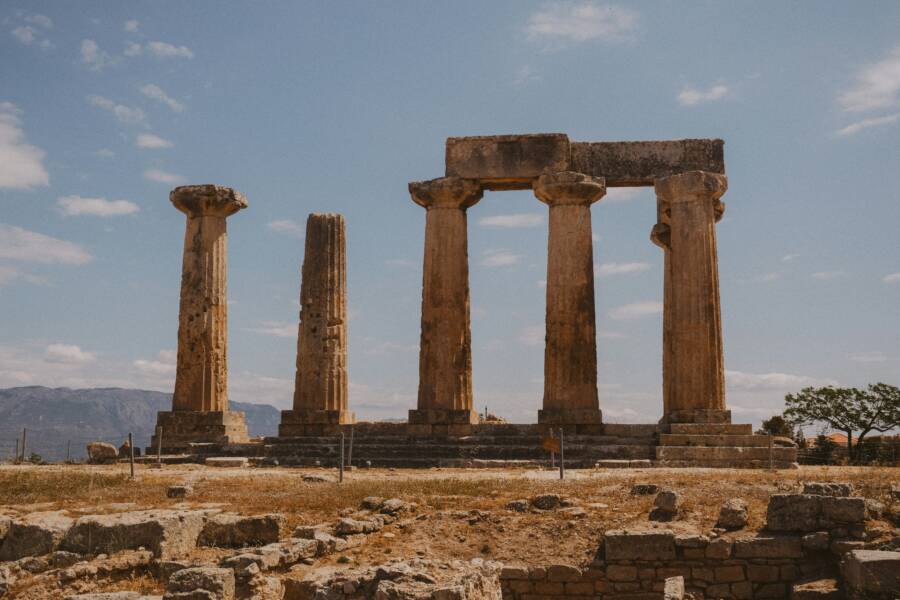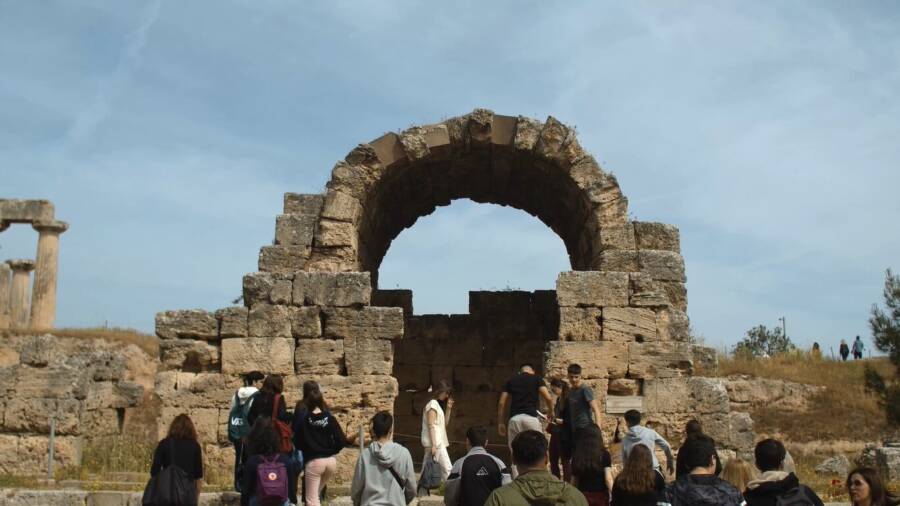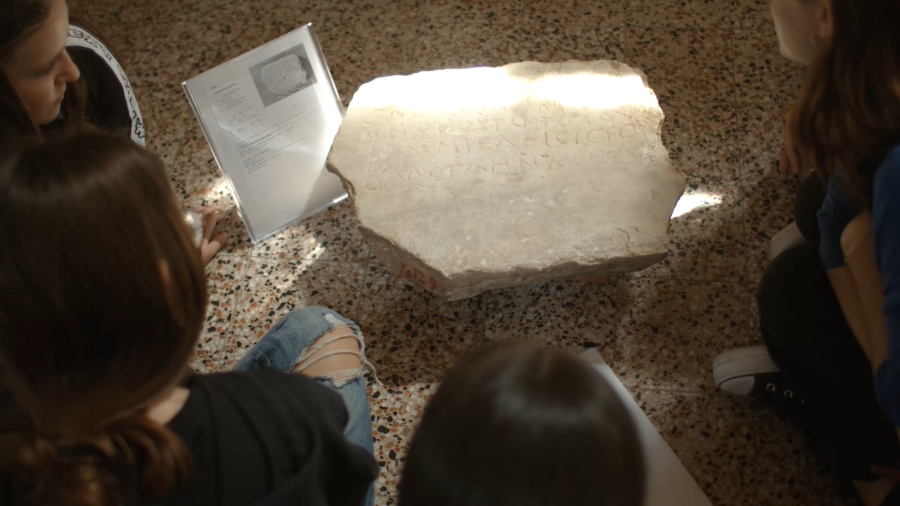One inscription from the Roman-era prison in Corinth reads: "Lord, make them die an awful death."

Alex Presa/UnsplashAncient ruins in Corinth, Greece, where the prison was once located.
Matthew Larsen, an archaeologist studying the ruins of the Roman Forum in Corinth, Greece, believes he’s identified the site of a former prison, according to a new study. If he’s right, the structure is one of just a handful of prisons dating back to ancient Roman times that’s ever been discovered.
Graffiti carved into the floor of the ruins helped lead Larsen to this conclusion. The inscriptions reveal intriguing information about the lives and mental states of the prisoners, painting a picture of men scorned, bored — and even love-struck.
Inside The Ruins Of The Roman Prison In Corinth
“Prisons must have existed in almost every Roman town, at least those that had a forum,” Matthew Larsen, an archaeologist and professor at the University of Copenhagen, explained his study, which was just published in the journal Hesperia. “Yet the archaeological remains of prisons have proven exceedingly hard to identify. There is scant evidence of what a Roman prison would have looked like, or where it would have been located.”
Now, however, Larsen believes that he has identified a prison in Corinth. It dates back more than 1,600 years to when the Roman Empire controlled the ancient city.

American School of Classical Studies at AthensThe ruins of what’s believed to be an ancient prison at Corinth.
The site was excavated in 1901, and Larsen studied records from the time to aid in his investigation. The documentation showed that stone slabs inscribed with graffiti made up the floor of one building. What’s more, the ruins held the remains of jugs called olpai, lamps, and a small latrine in one chamber.
All this, claims Larsen, suggests the site was indeed a prison. The jugs and lamps would have provided water and light to the inmates, while the toilet may have been used by prisoners or guards.
However, it was the graffiti on the floor that told the true, grim history of the building.
Deciphering The Graffiti The Ancient Inmates Left Behind
Although no records exist to explain who the inmates at the Roman prison in Corinth were or why they were detained, the graffiti found within the facility makes it clear that they were enraged about their situation.

American School of Classical Studies at AthensA researcher points to the inscriptions discovered on the floor of the prison in Corinth.
“You get a sense that they’re in a very dark space, that they cannot be given a hearing,” Larsen told Live Science.
One of the inscriptions reads, “Godbearer, repay [punishment given by] Marinos, the one who threw us in here and made us spend winter.” Another states, “Lord God and pure justice, ransom from this place the two brothers. Christ, safeguard both Boudis and John.”
The most disturbing, however, is an inscription reading: “Lord, make them die an awful death.”

American School of Classical Studies at AthensA piece of the prison floor with an inscription carved into the stone.
Alongside these angry inscriptions were more lighthearted ones, including possible references to loved ones and game boards that show how the prisoners may have passed their time.
While we may never know exactly who carved this graffiti into the stone floor — or why — this discovery gives us a peek into the daily lives and emotions of the people who lived in ancient Corinth 1,600 years ago.
After reading about the prison graffiti found in Corinth, dive into the true story of Devil’s Island, the world’s most feared prison. Then, read about the true story of decimation, the brutal military punishment of ancient Rome.





